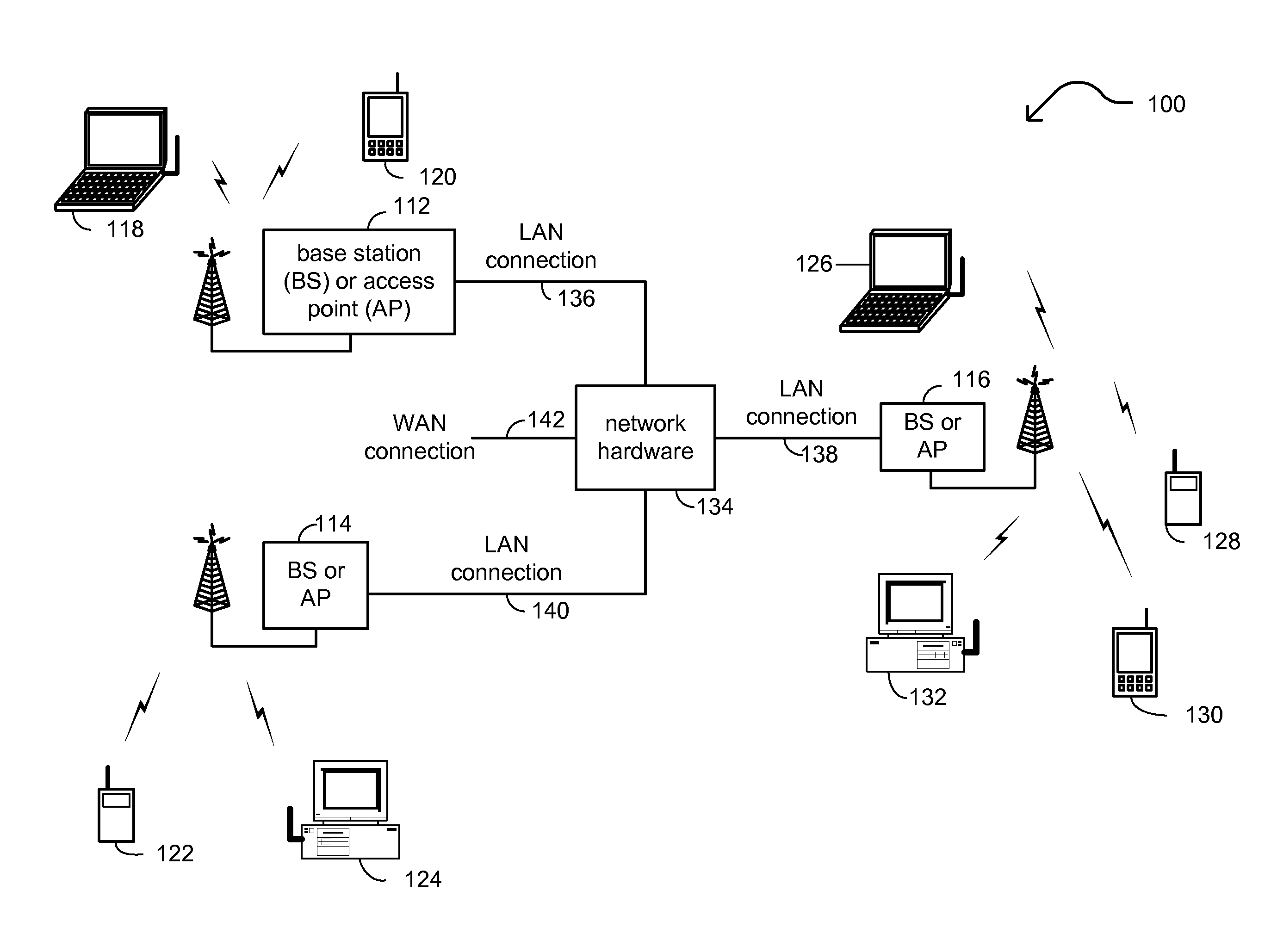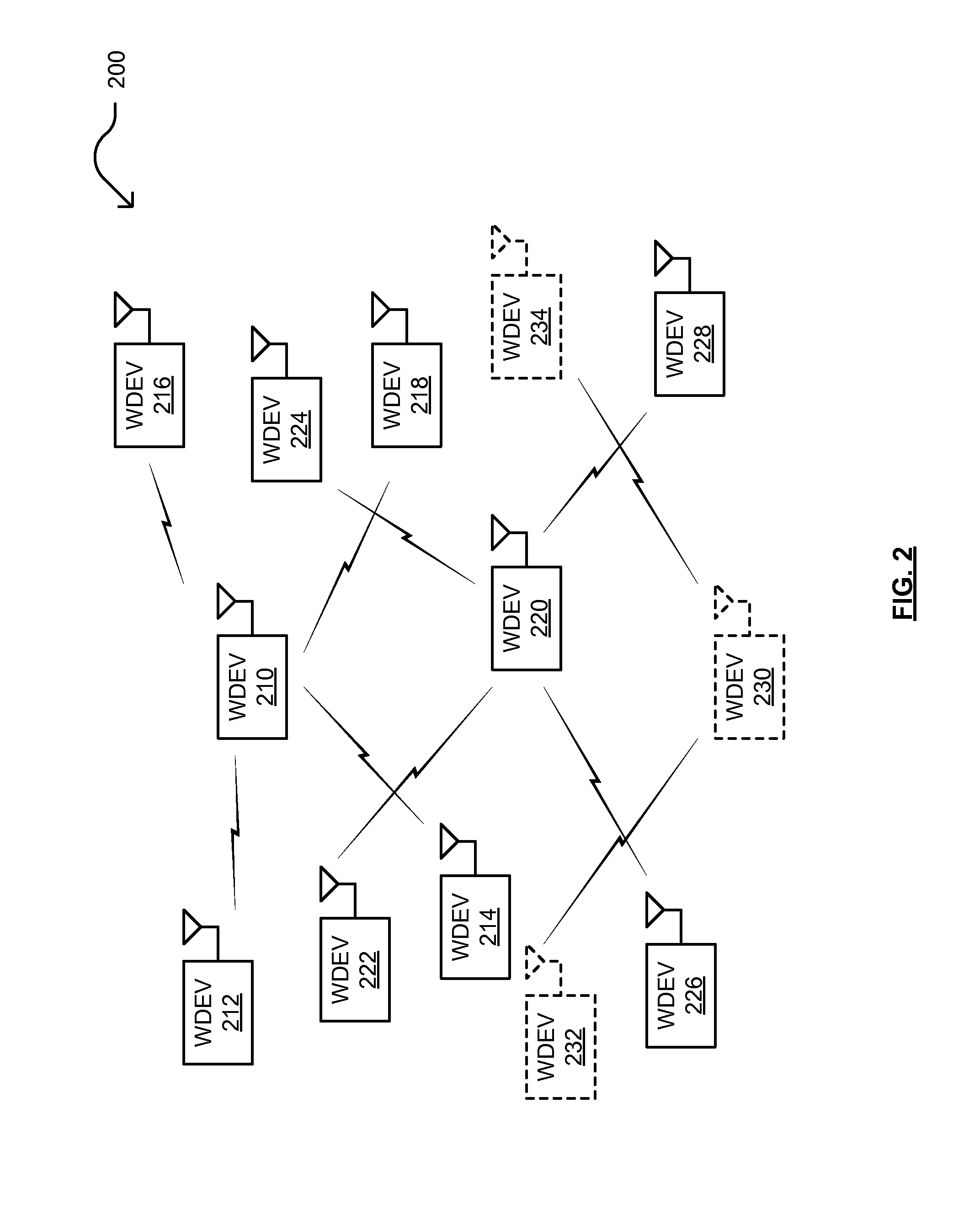Orthogonal frequency division multiple access (OFDMA) and duplication signaling within wireless communications
a wireless communication and orthogonal frequency division technology, applied in the field of multi-user communication and signaling, can solve the problems of reduced data rate, reduced communication efficiency, and reduced data rate between the devices, so as to achieve the effect of less than fully efficient use of the communication medium and lower data ra
- Summary
- Abstract
- Description
- Claims
- Application Information
AI Technical Summary
Benefits of technology
Problems solved by technology
Method used
Image
Examples
Embodiment Construction
[0028]FIG. 1 is a diagram illustrating one or more embodiments of a wireless communication system 100. The wireless communication system 100 includes base stations and / or access points 112-116, wireless communication devices 118-132 (e.g., wireless stations (STAs)), and a network hardware component 134. The wireless communication devices 118-132 may be laptop computers, or tablets, 118 and 126, personal digital assistant 120 and 130, personal computer 124 and 132 and / or cellular telephone 122 and 128. The details of an embodiment of such wireless communication devices are described in greater detail with reference to FIG. 2.
[0029]The base stations (BSs) or access points (APs) 112-116 are operably coupled to the network hardware 134 via local area network connections 136, 138, and 140. The network hardware 134, which may be a router, switch, bridge, modem, system controller, etc., provides a wide area network connection 142 for the communication system 100. Each of the base stations ...
PUM
 Login to View More
Login to View More Abstract
Description
Claims
Application Information
 Login to View More
Login to View More - R&D
- Intellectual Property
- Life Sciences
- Materials
- Tech Scout
- Unparalleled Data Quality
- Higher Quality Content
- 60% Fewer Hallucinations
Browse by: Latest US Patents, China's latest patents, Technical Efficacy Thesaurus, Application Domain, Technology Topic, Popular Technical Reports.
© 2025 PatSnap. All rights reserved.Legal|Privacy policy|Modern Slavery Act Transparency Statement|Sitemap|About US| Contact US: help@patsnap.com



